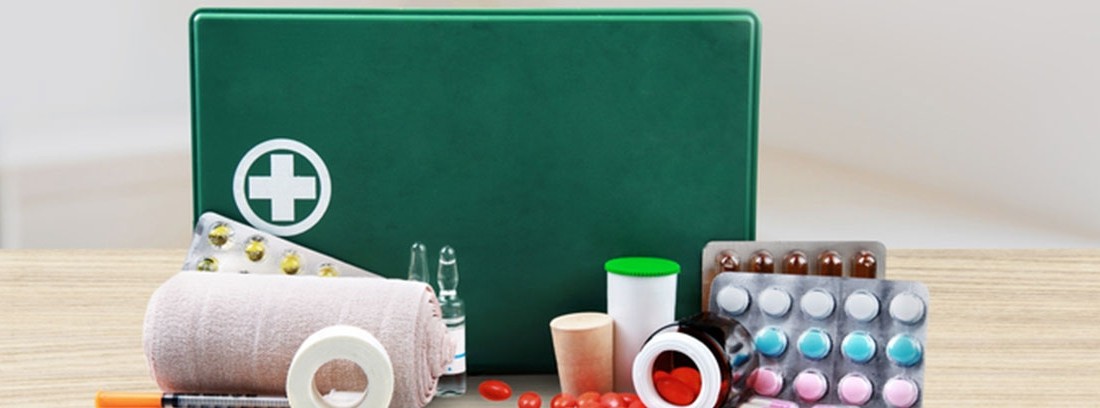The medicine cabinet

The first-aid kit is one of the things that should always be “up-to-date”, especially when there are children at home. It is important that it be complete, with the necessary medicines and elements that allow us to solve any emergency.
If the child has a chronic health problem, such as allergy, asthma or diabetes, they must have enough medication for possible unforeseen events. In these cases it is also advisable to always carry the medicines in the child's backpack, the parents' bag or in the glove compartment of the car. The first aid kit should be planned when the family goes on a trip, as part of the luggage.
Keep in mind that it should be kept out of the reach of the little ones, to prevent poisoning. It is best to put everything in a box and store it in a high cabinet (or locked) and inaccessible to children. The place where the first aid kit is located should be cool and dry, away from sun exposure and the expiration date of the containers should be checked periodically.
Once the expiration date has passed, the efficacy of the drug is doubtful. Expired medicines should be taken to the collection point in pharmacies, they should not be thrown away.
Essential items in the medicine cabinet
- Thermometer
- Antipyretics and analgesics: these are drugs that lower fever and relieve pain; for children they are marketed in the form of syrup: paracetamol and ibuprofen. Syrups must have a complex opening mechanism so that they cannot be opened by children
- Antihistamines: these are allergy medicines
- Cough suppressants: these are medicines to relieve coughs
- Calamine lotion: soothes skin irritations
- Band-Aids or dressings of different sizes
- Wound disinfectants: hydrogen peroxide, iodine, or chlorhexhydine
- Sterile gauze in small packages
- Bandages and tape
- Physiological single-dose serum: essential for nasal and eye washes
- Ointments for burns
- Insect repellent
- Scissors and tweezers
- An ice pack in the freezer can be very helpful in relieving inflammation in bumps and insect bites (sold in pharmacies)
Basic rules for the administration of medicines in children
It is not an easy or fun task. It is important to know that a child has to be medicated when the Pediatrician deems it advisable.
It should not be a common practice in families and, much less with children. Nor should the prescribed schedules be skipped or the duration of the treatment established by the doctor should be shortened.
When the Pediatrician recommends taking a drug, parents should know:
- The name of the medicine and its function: it is important to read the leaflet of the medicine to be administered. If something is not understood or there are doubts, the doctor or pharmacist should be consulted.
- The most common possible side effects of the drug: For example, antibiotics can cause diarrhea. It is essential to inform the Pediatrician of the child's possible allergies.
- The dose, frequency of administration and duration of treatment: in children the dose of medicine is calculated by weight and age. You should also know how to administer it: before or after meals. To dose the syrup, it must be done with the meters that the manufacturer attached to the container.
- The route of administration: oral (syrup), inhaled, ophthalmic (drops or ointment for the eyes), otic (drops in the ears), intramuscular (punctured) or topical (applied to the skin).
Remember
Any medicine can cause undesirable effects. If during the taking of the medicine the child presents spots on the skin, vomiting or diarrhea, the pediatrician should be consulted as soon as possible.
(Updated at Apr 13 / 2024)